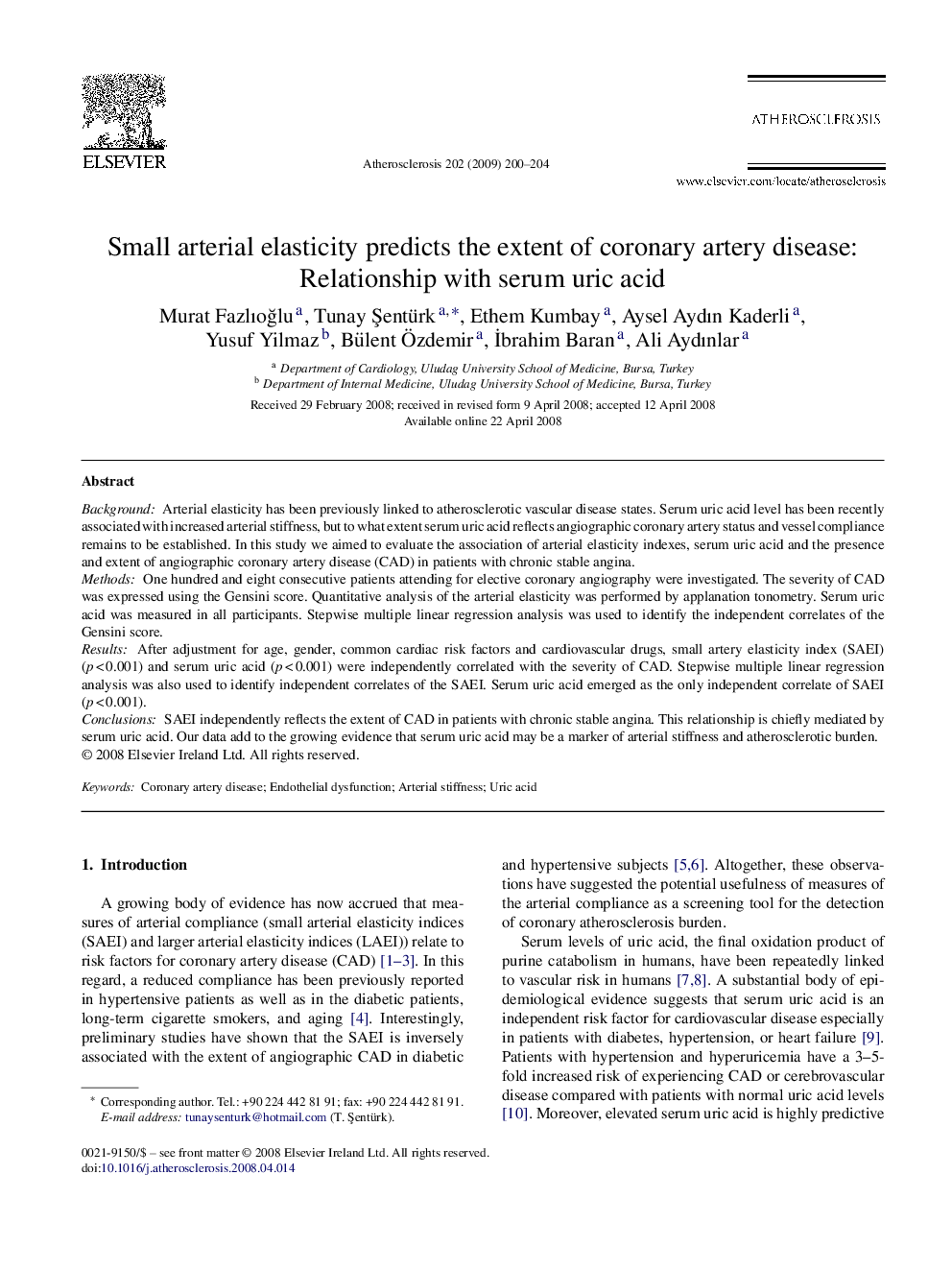| Article ID | Journal | Published Year | Pages | File Type |
|---|---|---|---|---|
| 2893784 | Atherosclerosis | 2009 | 5 Pages |
BackgroundArterial elasticity has been previously linked to atherosclerotic vascular disease states. Serum uric acid level has been recently associated with increased arterial stiffness, but to what extent serum uric acid reflects angiographic coronary artery status and vessel compliance remains to be established. In this study we aimed to evaluate the association of arterial elasticity indexes, serum uric acid and the presence and extent of angiographic coronary artery disease (CAD) in patients with chronic stable angina.MethodsOne hundred and eight consecutive patients attending for elective coronary angiography were investigated. The severity of CAD was expressed using the Gensini score. Quantitative analysis of the arterial elasticity was performed by applanation tonometry. Serum uric acid was measured in all participants. Stepwise multiple linear regression analysis was used to identify the independent correlates of the Gensini score.ResultsAfter adjustment for age, gender, common cardiac risk factors and cardiovascular drugs, small artery elasticity index (SAEI) (p < 0.001) and serum uric acid (p < 0.001) were independently correlated with the severity of CAD. Stepwise multiple linear regression analysis was also used to identify independent correlates of the SAEI. Serum uric acid emerged as the only independent correlate of SAEI (p < 0.001).ConclusionsSAEI independently reflects the extent of CAD in patients with chronic stable angina. This relationship is chiefly mediated by serum uric acid. Our data add to the growing evidence that serum uric acid may be a marker of arterial stiffness and atherosclerotic burden.
